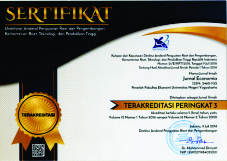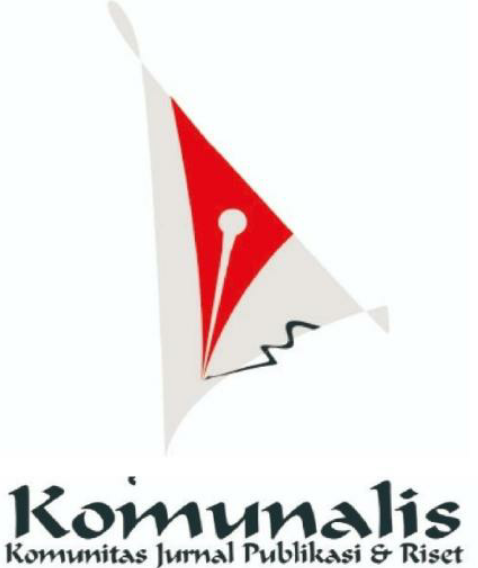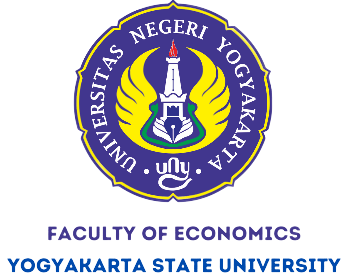ASEAN Labor Market Integration and Its Social Effects for Unskilled Labor Migration
Downloads
Abstract: ASEAN Labor Market Integration and Its Social Effects for Unskilled Labor Migration. Member states of ASEAN mainly needed two criteria of foreign labor: highly skilled professionals or its counterpart, unskilled workers. High-skilled professionals are provided with some rights and benefits. Unskilled migrants are equipped with very limited rights and hardly subject to integration approaches. This paper will discuss the social effect of integration, notably the unskilled labor, by linking migration and remittance in ASEAN, labor based on sectored pattern, and immigration governance. Countries need to improve working conditions and wages, provide professional training and improve education for every level of workers. There are some social effects but can be managed if the governments committed to their policy.
Keywords: economic integration, remittance, migrant worker, unskilled labor
Abstrak: Integrasi Pasar Tenaga Kerja ASEAN dan Dampak Sosial Terhadap Migrasi Tenaga Kerja Tidak Terampil. Sebagian besar negara–negara anggota ASEAN membutuhkan tenaga kerja profesional dan tenaga kerja yang tidak terampil. Tenaga kerja profesional memiliki hak–hak khusus, fasilitas, dan berbagai keuntungan, sedangkan tenaga kerja tidak terampil hanya memiliki sedikit hak dan lebih jarang menjadi topik utama kerjasama integrasi antar negara. Artikel ini akan membahas dampak sosial integrasi, terutama bagi tenaga kerja tidak terampil, dengan mengaitkan hubungan antara migrasi dan remittance di ASEAN, sektor tenaga kerja, dan pengelolaan imigrasi yang dilakukan pemerintah. Sebagian besar negara anggota ASEAN harus meningkatkan standar kinerja dan gaji, menyediakan pelatihan, dan meningkatkan tingkat pendidikan. Terdapat beberapa dampak sosial yang muncul. Namun, beberapa dampak tersebut akan dapat ditangani apabila pemerintah memiliki komitmen dalam menerapkan kebijakannya.
Kata kunci: integrasi ekonomi, remittance, pekerja migran, tenaga kerja tidak terampil
Downloads
ASEAN Secretariat (2015) ASEAN Integration Report 2015. Jakarta: ASEAN Secretariat.
ASEAN (2009a) ASEAN Committee on the Implementation of the ASEAN Declaration on the Protection and Promotion of the Rights of Migrant Workers (ACMW) Work Plan. ASEAN Secretariat. Accessed from http://www.asean.org/archive/23062.pdf on December 19th, 2015.
ASEAN (2009b) ASEAN Socio-Cultural Community Blueprint. Jakarta: ASEAN Secretariat.
ASEAN (2009c) Work Plan of the Senior Labour Officials Meeting Working Group on Progressive Labour Practices to Enhance the Competitiveness of ASEAN (SLOM-WG). Accessed from http://www.asean.org/archive/22910.pdf on December 19th, 2015.
ASEAN (2015a) ASEAN Economic Community Blueprint. Jakarta: ASEAN Secretariat.
ASEAN (2015b) Macroeconomic indicator. Accessed from http://www.asean.org/storage/2015/11/Macroeconomic_Indicators/T7_Aug15.pdf on December 19th, 2015.
Battistella, G. and Asis, M. (2003) Unauthorized migration in Southeast Asia. Quezon City: Scalabrini Migration Center.
Chalamwong, Y. and Rodsomboon, S. (2007) "Expanding the Number of Semi-skilled and Skilled Emigrant Workers from Southeast Asia to East Asia". Thailand Development Research Institute Quarterly Review, 3-9.
Das, S.B. (2014) The ASEAN Economic Community's labour policy needs work. Accessed from http://www.straitstimes.com/news/opinion/moreopinionstories/ story/work-needed-asean-community-labour-policy-20140904 on December 8th, 2015.
Hugo, G. (2009) "Best Practice in Temporary Labour Migration for Development: A Prespective from Asia and the Pasific". IOM International Migration, 47(5), 23-74.
International Labour Organization (ILO) and Asian Development Bank (ADB) (2014 ASEAN Community 2015: Managing Integration for Better Jobs and Shared Prosperity. Bangkok: ILO and ADB. Accessed from www.adb.org/sites/ default/files/publication/42818/aseancommunity-2015-managing-integration.pdf on November 5th, 2015.
Kaur, A. (2006) Order (and Disorder) at The Border: Mobility, International Labour Migration and Border Controls in Southeast Asia. In A. Kaur and I. Metcalfe (Eds.), Mobility Labour Migration and Border Controls in Asia. Basingstoke: Palgrave Macmillan.
Kaur, A. (2010) "Labour Migration Trends and Policy Challenges in Southeast Asia". Journal Policy and Society Associates (APSS), 29, 385-397.
Migration Policy Institute (2013) "International Migrant Population by Country of Destination, 1960 – 2013". Accessed from www.migrationpolicy.org.
Serrano, M.R., et.al. (2013) Labour Laws and Practices : A Comparative Study on Gender Equality, Employment of Persons with Disabilities, Youth Employment and Social Dialogue (Volume 2). Jakarta: ASEAN Service Employees Trade Union Council.
The Ministry of Labor, Invalids and Social Affairs of Vietnam (MoLISA) (2013) Maternity Protection for Female Workers: Laws and Practices in ASEAN. Vietnam.
The Straits Times (2009) Maid Talks Delayed, July 13th, 2009.
World Bank (2013) "Immigration (in), Emigration (out), and Net Migration Flows for Countries ASEAN in 2013". Data. Accesed from www.data.worldbank.org.
World Bank (2014) "Bilateral Remittance Matrix 2014". Data. Accessed from www.econ.worldbank.org.
Yeoh, B.S.A. and Lin, W. (2012) Rapid Growth in Singapore's Immigrant Population Brings Policy Challenges. Accessed from http://www.migrationpolicy.org/article/rapid-growth-singapores-immigrant-population-brings-policy-challenges/ on December 19th, 2015.
Yeoh, B.S.A. and Mirriam, E. (2014) Labour Migration and Integration in ASEAN. Migration and Integration: Common Challenges and Responses from Europe and Asia. Singapore: Konrad Adenauer Stiftung. Accessed from http://www.kas.de/wf/doc/kas_40562-1522-2-30.pdf?150227063413.
Zachariadis, M. (2012) "Immigration and International Prices". Journal of International Economics, 87(2), 298-311.















